In some sense, the Goddess is our world in a way that God is not
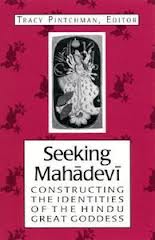
"One important question raised by this collection is that of the characteristics or attributes that are most consistently central to Mahadevi's nature in the variety of textual and devotional environments we explore in these pages. This is a somewhat loaded question, for it suggests a desire to circumscribe a core identity that transcends specific context, an enterprise that this book ultimately resists. It is also not a question that any of the contributing authors addresses directly. I would propose, however, that themes pertaining to Devi's immanence coupled with her transcendence, her nature as 'sakti/Sakti, and her status as Divine Mother seem to recur in these essays with the greatest frequency. It is Devi's transcendence-yet-immanence, in fact, that Hawley sees as particularly characteristic, remarking: 'The unity of the Great Goddess incorporates the world as we know it, as well as transcending it. In some sense, the Goddess is our world in a way that God is not' (1996, 6). The association of the Goddess with sakti, too, is so strong that traditions of devotion to the Goddess in any of her forms are called Saktism, devotion to Sakti, and devotees of the Goddess are known as Saktas. The epithet 'Ma,' 'mother,' is commonly used for goddesses all over India. The understanding of Mahadevi as Divine Mother, an understanding that is obviously related to her femaleness, is underscored in several chapters of this book.”
“Goddess worship has been an important dimension of Hindu religious life for many centuries, and the Hindu goddess tradition is one of the richest, most compelling such traditions in existence today. In cities, towns, and villages all over India, temples and shrines dedicated to goddesses abound, and devotees flock to these to express their reverence, concerns, hopes, and fears. Goddesses also figure prominently in many home shrines and rituals, and both men and women participate widely in various forms of goddess devotion. Although Hindus recognize and revere a variety of different, discrete goddesses, they also tend to speak of 'the Goddess' as a singular and unifying presence.
The notion of a singular, supreme Goddess is crystallized in a text of approximately the sixth century C.E. called the Devi-Mahatmya, 'Glorification of the Goddess.' The central narrative concerning the Goddess in the Devi-Mahatmya has to do with her adventures as a great slayer of demons who leads the gods to triumph in their fight against demonic forces and vanquishes those who would subdue her. The vision of the Goddess that the Devi-Mahatmya achieves in narrating this story borrows and weaves together narrative and devotional threads already in existence at the time, but, in so doing, it produces a marvelous new picture of divinity. Thomas Coburn, who has written extensively on the Devi-Mahatmya, observes the synthetic nature of the text's vision of the Goddess:
The synthesis that is accomplished in the Devi-Mahatmya is therefore extraordinarily and uniquely broad. It reaches deep into the Sanskritic heritage, identifying the Goddess with central motifs, names, and concepts in the Vedic tradition. It appropriates one familiar myth on behalf of the Goddess, and enfolds several less well-known tales into its vision. It locates the Goddess in relation to a full range of contemporary theistic and sectarian movements, familiar ones such as those of Siva and Vishnu, and more recent ones such as those of Skanda and Krishna Gopala. (1991, 27)
Coburn notes also the unique contribution of the text historically, observing that 'the Devi-Mahatmya is not the earliest literary fragment attesting to the existence of devotion to a goddess figure, but it is surely the earliest in which the object of worship is conceptualized as Goddess, with a capital G' (1996, 16).
In the Devi-Mahatmyathe Goddess is given numerous epithets, indicating that while she is unique, her forms are many. Contemporary devotees, too, often maintain that there is one supreme Goddess who has many forms or who is the unity underlying all discrete goddesses by way of accounting for the multiplicity of goddesses that persists alongside talk of 'the Goddess.' David R. Kinsley notes that in general, there are two primary ways in which the unity of all goddesses is envisioned in the affirmation of a single, Great Goddess in the Hindu tradition. One way is to postulate the existence of one transcendent Goddess possessing the classical characteristics of ultimate reality and to portray all particular goddesses as her portions or manifestations. Another way is for a particular goddess like Parvati, Laksmi and so forth to be affirmed as highest with all other goddesses viewed as her portions or manifestations (Kinsley 1986, 132).
As scholarly interest in Hindu goddesses and goddess traditions has flourished in the last two decades, scholars have continued to puzzle over the 'goddess(es) versus Goddess' conundrum. John S. Hawley observes quite correctly that since Indic languages observe no distinction between capital letters and lowercase letters, and since they lack the definite article, the 'g/G' issue and the problem of whether to use the article 'the' when naming (the) Hindu Goddess is 'clearly ours, not India's.' He also remarks, however, that regardless of the lack of a 'g/G' problem in Indic languages, 'the quandary as to singular or plural is shared,' and that 'sometimes the singular feels more accurate, sometimes the plural' (1996, 8). Kinsley uses the name Mahadevi or 'Great Goddess' to refer to the supreme, singular Goddess underlying all goddesses. One could in fact see the use of the prefix 'Maha-,' 'great,' in Mahadevi's name as largely analogous to the English capital G that Coburn points to in his description of the Devi-Mahatmya as 'the earliest [literary fragment] in which the object of worship is conceptualized as Goddess, with a capital G.' Hence, one way to refer to the singularity or capital G-ness of Devi's nature is to affix 'Maha-' to her name. In some contexts, Devi is explicitly called Mahadevi, whereas in other contexts her 'Maha-' nature is not stated but is implicit in the ways she is portrayed. In this book, we will refer to her as Devi, (the) Goddess, Mahadevi, and (the) Great Goddess, understanding all these names as indicating her supreme, singular form.
Mahadevi is both the unity underlying all female deities and a magnificent divine being. Kinsley offers a 'composite sketch' of her that he compiles from a number of textual sources. He notes that generally she is homologized with the principles prakrti (materiality), maya (cosmic illusion), and sakti (power), which drive the process of cosmogenesis and sustain the created world. She is portrayed as both transcendent and immanent, rooted in the world and embodying it but stretching beyond it as well, and in some contexts she is identified with ultimate reality, Brahman, itself (1986, 133—139). She is both creator and queen of the cosmos and is often portrayed as independent of male control rather than married or subservient to a male consort (138; also Coburn 1982, 1996). Many contexts emphasize her nature as Divine Mother, too, a status that clearly reflects her gender, although she is sometimes said to transcend gender at the highest level (137).
Although many of these characteristics persist across different contexts, there is also a great deal of diversity with respect to portrayals of Mahadevi's identity. The Devi-Mahatmyahas been highly influential in shaping later text-based portrayals of the Goddess, but later traditions that appropriate various themes from the Devi-Mahatmya do so in diverse ways, achieving their own, unique visions of the Goddess. And, of course, other influences apart from the Devi-Mahatmya are at work, too. In his study of the Devi-Bhagavata Purana, for example, C. Mackenzie Brown skillfully demonstrates how themes derived not only from the Devi-Mahatmya, but also male Vaisnava theologies, especially those articulated in the Bhagavata Purana, are incorporated in this text's portrayal of the Goddess, resulting in a fresh perspective on her nature and identity (1990). Kinsley notes that in certain texts of the Pancaratra school of thought and devotion, Laksmi is 'elevated functionally to a position of supreme divinity' and is spoken of in terms that are quite consistent with other Hindu portrayals of the supreme, singular Goddess, although descriptions of her in the sections of text to which he refers—which have to do largely with cosmogony—do not bear any clear narrative resemblance to the martial goddess of the Devi-Mahatmya(1986, 30—31). When it comes to practice, as Coburn notes, Devi's identity is always shaped by local custom, and where text-based ideas about Devi weave their way into popular practice, they do so in complex ways (1996, 43—44). The qualities of the Goddess that are emphasized, the name and nature of the goddess identified as Devi, and other such factors are all subject to local interpretation. Hence, while Kinsley's 'composite sketch' is a helpful starting point for talking about Mahadevi's identity, it does not—nor does it purport to—encompass the myriad variations on and departures from the themes that Kinsely identifies.
The much-invoked notion that there is one, supreme Goddess with many forms encourages the understanding not only of all individual goddesses as Mahadevi's parts, but also of all distinct Mahadevi 'portraits' as so many different perspectives on the singular Goddess. It functions as a hermeneutical lens that enables us to see unity within the multiplicity of views on Mahadevi's nature and character. While not disputing the legitimacy of such a perspective, these essays turn to focus on the multiplicity itself, the many ways in which the supreme Mahadevi and her unified diversity are portrayed, understood, and experienced.
The topic of this book is 'constructing the identities of the Hindu Great Goddess.' As noted above, we understand the Hindu Great Goddess, Mahadevi, to be the supreme female deity who is also considered to be the unity and source of all individual goddesses. Different essays in this book may highlight one or the other of these dimensions of her being, or both. We understand 'identity' to refer to Mahadevi's nature, character, and attributes as these are portrayed in oral and written texts or understood and articulated by devotees. We use terminology of 'construction' to signal what we understand to be the constitutive role of interpretation in shaping portrayals of Mahadevi's identity in diverse ways in different contexts. This understanding is informed by a more general tendency in many strands of contemporary scholarship to regard certain forms of knowledge as context-dependent and inherently conditioned by interpretive activity.
In his classic works The Social Construction of Reality and The Sacred Canopy, Peter L. Berger argues persuasively that social and cultural truths are constructed through human processes of 'world building.' Such world building also entails the construction of religion and religious categories.1 But, like cultures, religions themselves are internally diverse and encompass multiple, sometimes competing discourses that are conditioned by context. The various texts, communities, and individuals explored in this volume envision the Goddess through epistemological lenses that are shaped by a diversity of religious, social, textual, political, psychological, historical, and other, often local conditioning factors. Worshipers encounter the Goddess through experiential and ritual frames that are similarly conditioned. For purposes of the task at hand, therefore, we understand Mahadevi to have multiple identities that are constructed through interpretive activity occurring in particular textual and devotional contexts subject to particular conditions. This understanding is meant not as an ontological claim but as a hermeneutical framework that guides our exploration of Mahadevi's identity.
In addressing our topic, contributors tend to organize their essays around the issue of identity-construction primarily in two ways. First, some contributors focus on the 'constructions' or constructed identities of Mahadevi themselves in the specific textual, devotional, and historical contexts in which they arise. Construction is a process, too, however, and some essays explore processes through which particular goddesses or women come to be identified with the singular Mahadevi in particular instances, or how and why such identification occurs. These two emphases are relatively interwoven, of course, and to separate them is somewhat misleading. However, several of the essays tend to focus relatively more on one issue or the other.
There are three primary goals of this volume. First, it aims to call attention to the great diversity of Mahadevi's identities to those who worship her. In so doing, it considers a wide variety of materials and explores a wide range of particularized contexts. We deem both textual and nontextual materials to be worthy of consideration, although most of the essays focus on Mahadevi's identity in lived devotional contexts. Second, it aims to elucidate the various ways that Mahadevi's diverse traits and attributes are interpreted, enlivened, and rendered meaningful in different ways in different contexts. And third, by ranging broadly, this collection of essays hopes to encourage further exploration of both continuities and discontinuities concerning perceptions of Mahadevi from context to context. While several studies of Hindu goddesses investigate localized portrayals of the Great Goddess (e.g., Sax 1991, Erndl 1993, Brown 1990), by juxtaposing numerous depictions of her, this book invites comparative reflection on her multiple identities and the ways these are constructed.
One important question raised by this collection is that of the characteristics or attributes that are most consistently central to Mahadevi's nature in the variety of textual and devotional environments we explore in these pages. This is a somewhat loaded question, for it suggests a desire to circumscribe a core identity that transcends specific context, an enterprise that this book ultimately resists. It is also not a question that any of the contributing authors addresses directly. I would propose, however, that themes pertaining to Devi's immanence coupled with her transcendence, her nature as 'sakti/Sakti, and her status as Divine Mother seem to recur in these essays with the greatest frequency. It is Devi's transcendence-yet-immanence, in fact, that Hawley sees as particularly characteristic, remarking: 'The unity of the Great Goddess incorporates the world as we know it, as well as transcending it. In some sense, the Goddess is our world in a way that God is not' (1996, 6). The association of the Goddess with sakti, too, is so strong that traditions of devotion to the Goddess in any of her forms are called Saktism, devotion to Sakti, and devotees of the Goddess are known as Saktas. The epithet 'Ma,' 'mother,' is commonly used for goddesses all over India. The understanding of Mahadevi as Divine Mother, an understanding that is obviously related to her femaleness, is underscored in several chapters of this book.”
Seeking Mahadevi: Constructing the Identities of the Hindu Great Goddess
Tracy Pintchman, State University of New York Press (2001) pp. 1-6
"One of the reasons for the appeal of South Asian goddesses is their perceived accessibility, which results from their interest in the affairs of devotees. According to Madhu Khanna, one of my Indian collaborators, 'The Goddess is popular in India because she gives both bhoga and moksha. That is a very special thing about Goddess worship, that she's interested in worldly welfare as well as enlightenment'.”9
Dobia, Approaching the Hindu Goddess of Desire
Feminist Theology: The Journal of the Britain & Ireland School; Sep2007, Vol. 16 Issue 1, p 61
9.In conversation, Delhi 1994, cited in Dobia, Shakti Yantra: A Women's Pilgrimage to Kamakhya (Doctoral thesis: University of Western Sydney, forthcoming).
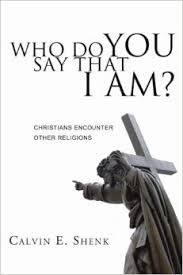
Response to Religious Plurality - Pluralism
Definition
"Pluralists are hesitant to accept religious paths that are exclusivist or inclusivist in character, considering them too narrow-minded. Such categories are regarded as chauvinistic and morally and theologically problematic. Pluralism sees itself as the most plausible explanation of all religious traditions.
Pluralism disavows the uniqueness and particularity of Jesus as the definitive, final, and normative revelation of God for salvation. Christian faith is considered no more true than any other religion; all religions are authentic manifestations of God and are equal in providing salvation. Proponents of religious pluralism believe there are many paths to God, each equally valid. Since God is revealed to human beings in a variety of forms, and since the human response to God varies, no religion can claim supremacy.
Pluralists believe that the exclusive claim for Christ held during twenty centuries is no longer tenable. The early church needed to learn that God's grace was not confined to Israel. Likewise, Christians must recognize God's grace at work among all people and in all the great religions, giving up our claim to sole possession of the truth. Given the universality and impartiality of God's love, all revelations are believed to have a saving intent. Emphasis is placed upon harmony, parity, and parallelism of the religions and the relativity and conditional character of all contextual religious experience, including Christian faith. It is therefore a mistake to absolutize religion, since religion is not divine but a way to and from the divine.
Common Essence
One often hears declarations like these: 'To every culture its own religion.' 'To every belief its own portion of the truth.” "God is equally at work in all religions to bring salvation.' 'The containers are different but the water is the same.' 'Differences are like the waves of the ocean: the ocean is the same, but the waves take a variety of forms.'
Religious pluralism in the West has been impacted significantly by the Eastern mind. Hindus believe all paths in the end lead to God. It is common for Buddhists-Shintoists in Japan to affirm that all religions are true and mediate salvation, declaring, 'Although the paths to the summit may differ, from the top one sees the same moon.' The Hindu god Krishna said, 'Whatever path men travel is my path; no matter where they walk, it leads to Me.' Hindus speak of many faces of God but one reality; the outward appearance is illusion, concealing a deeper reality.
Though religions do not appear to say the same thing, many pluralists insist that religions lead to the same end and touch the same Divine Reality, but they use different symbols and language systems. It is argued that differences are peripheral, because religions at their core share a common essence. The common essence is found in the search for the presence of God, for the Ultimate Mystery, for the Absolute Reality, or for the Ground of Being beneath the different manifestations. Since the Holy is beyond individual embodiments, differences should not obscure the unity of vision. Transcendent Being is considered greater than anyone's understanding because our conceptual maps are finite pictures of the Infinite. The same God is worshiped, but the local coloring is different. The light is the same, but the lamps vary.
Tolerance of Religion
Religious pluralism goes beyond respectful tolerance by promoting a tolerance which claims that all religions are equal in searching for truth and working for righteousness. (p.55) Christian faith is not the final locus of religious truth. Rather, since knowledge of God is partial in all faiths, including the Christian faith, religions must acknowledge each other if the full truth about God is to be available to humankind.
Pluralism implies that a 'whole' religious vision requires a variety of approaches even if those approaches appear to be contradictory. Since no religion is perfect and each grasps only part of the Real, there needs to be mutual enrichment, interaction, interdependence, and reciprocal challenge of one's limited, defective, or misleading understandings. Each religion stimulates the other to growth. One religion does not provide everything needed.
Such pluralists say that God does not just allow a plurality of religions; God wills them. The rites and doctrines of religions are impulses of God's grace. If the knowledge of God is equally available in different religions, one should place all religions on an equal footing, not just for the sake of religious freedom, but for the sake of theology.”
Social Conditioning
According to pluralists, God has provided various mediators for different geographical and cultural contexts. Perceptions of God differ because of differing historical and cultural conditions. Each religion is a historical-cultural variation of a common authentic conviction. Christian faith works best in some settings; other faiths are preferable in other settings.
In whatever religious environment one was born, there one should remain: primal religions for Africans, monotheism for Arabians, Christian faith for Western culture, Hinduism for India. Sufi Muslims teach that one can dig a Jesus well, a Buddha well, or a Krishna well; but if one only digs a little in each well, it is difficult to find water.[3] The implication is that one needs to dig deeper in one well and not change wells. Christians should continue to believe in Jesus Christ but should not impose their path on those who follow other ways.
Specialization of Religion
Some pluralists understand each faith as a specialization with different strengths and weaknesses, just as each person is different. Or each faith is considered a different building material which contributes to the construction of one house of God. Instead of emphasizing the core of faith, they point to the convergence of faiths. They welcome a global theology in which each faith is corrected by the strengths of the other: Jews and Muslims emphasize the oneness of God; Hindus emphasize the variety of God. The linear, historical, and prophetic character of the Near Eastern religions will be enriched by the circular, eternal, and mystical strengths of the Southeast Asian religions. According to this view, God is present in each faith, though only partially present. Salvation is available in each faith, but religions are not homogenized.
Other pluralists come close to inclusivists when they acknowledge the distinctiveness of each faith but give special attention to Christ. Truth is dispensed among all religions, but though God is known in other faiths and people seek and find God in other faiths, God is most fully known in Christ. Christ embodies not just partial truth but fullness of truth. Sufficient knowledge for salvation is found in other faiths, yet to a lesser degree. One sees most clearly in Christ what God is doing outside of Christ. Christ is considered the highest peak of the mountain among mountain ranges. He is without peers, yet not alone.”
Who Do You Say That I Am? Christians Encounter Other Religions
Calvin E. Shenk, Wipf and Stock Publishers (2006) pp. 53-56
.jpg)
The Paraclete Shri Mataji "But today it is the day I declare I am the One who have to save the humanity. I declare I am the One who is Adi Shakti (Holy Spirit or Ruh of Allah), who is the Mother of all Mothers, who is the Primordial Mother, the Shakti of the Desire of God who has incarnated on this Earth to give meaning to itself, to this Creation, to human beings. And I am sure that through My love and patience and My powers I am going to achieve it.
I was the One who was born again and again. But now I have come in My complete form and with complete powers. I have come to this Earth not only for salvation of human beings, not only for their emancipation, but for granting them the Kingdom of Heaven, the Joy, the Bliss that your Father (God, Allah, Sadashiva) wants to bestow upon you.”
The Paraclete Shri Mataji
United Kingdom ?” December 2, 1979
"I am the Adi Shakti (Holy Spirit or Ruh). I am the One who has come on this Earth for the first time in this Form to do this tremendous task . The more you understand this the better it would be. You will change tremendously.
I knew I'll have to say that openly one day and we have said it. But now it is you people who have to prove it that I am that!"
The Paraclete Shri Mataji
Sydney, Australi"March 21, 1983
.jpg)
The Paraclete Shri Mataji "In the Puranas, the modern times we are now living in are called Kali Yuga, the Age of Confusion and Conflict. Yugas are periods of time, thousands of years long, that recur in a cyclic or spiral progression. Dwapara Yuga is the second age, when people begin to lose some of the great qualities they had in the first or Golden Age, and Kali Yuga (present Age of Darkness) marks the lowest point of moral and spiritual development in each cycle. It is followed by Krita Yuga, the age of transformation or actualisation of spiritual experience, which leads finally to Satya Yuga, the Age of Truth or Reality, in which the Golden Age returns and all man's faculties begin to manifest themselves in their full glory once again. Thus according to the Puranas humanity has great hope of enjoying Satya Yuga which will give peace, harmony and Divine love.
If we tally the description of Kali Yuga in the Puranas with very obvious observations of the present state of our society, it seems to me that the worst period of Kali Yuga started during the first quarter of this century. It is almost unbelievable how culture and thought have completely changed in such a short time, particularly in the West. In Kali Yuga, all traditional values are more and more undermined and destroyed and there is great moral confusion. There is also a restless seeking for new forms and new kinds of order. According to the Puranas, when the lowest point is reached, the people will have lost contact with their inner sense of dharma (innate sense of righteousness which is sustained). There will be confusion between right and wrong. Children will no longer respect their parents. Men will think and act like women and women will become like men. The lowest grades of human beings will take over positions of power and authority, and the higher, spiritual type of human being will be neglected and despised.
About twenty years ago, marking the very first stirring of a new Satya Yuga, the transitional age called Krita Yuga started manifesting itself. Krita Yuga is a unique period of spiritual ascent as the All-Pervading Divine Power called the Paramchaitanya in Sanskrit has become active at the level of ordinary human existence. It is predicted that this Divine activity will bring about the long awaited Satya Yuga, the era of growth and spiritual ascent.
All the signs show that it is the Era of Truth which is now advancing and we can see very clearly. For example, how quite ordinary people are becoming aware of Absolute Truth and Reality through Sahaja Yoga. Sahaja Yoga is the spontaneous union of the individual consciousness with the All-Pervading Divine Power through the awakening of the residual Power of Kundalini which lies dormant within all human beings in the triangular bone at the base of the spine called the sacrum ?” the sacred bone.
Krita Yuga has another characteristic by which, when this Yuga is manifested, the falsehood of all outside religions, all people in power who are unpatriotic and dishonest will be automatically exposed. All false prophets and cult leaders will be exposed and all organizations that perpetrate falsehood and hatred in the name of God will be exposed because in Krita Yuga the Truth is spontaneously brought out. All corrupt entrepreneurs and false teachers will also be exposed.
A second characteristic of Krita Yuga is that whenever there is a falling away from Dharma the inner Divine Laws of Righteousness which are innate and which regulate both human existence ?” the whole world structure as well as manifestation of the Cosmos ?” will arise as a result with a corresponding, compensatory effect. This is called the Law of Polarity or in Sanskrit karma-phalam which means in practical terms that whatever you have done, you will get the fruits of those actions ?” As you sow, so shall ye reap.
So in this Yuga all persons will get their karma phalam. If they have led their lives in accordance with the Universal and Eternal Laws of Being they will enjoy an existence which is harmonious and fulfilling. But, on the other hand, whatever wrongs they have done ?” that is, whenever they have fallen out of the central path of Dharma, either individually or collectively ?” they will have to pay for that in this life time.
In Krita Yuga there may be much to suffer. This is very unfortunate but it is simply the effect of our own actions which we have to face. Of course suffering can be avoided if people achieve their ascent; what in Yoga we call "the State of Spirit" or "union with the Divine Power.” In Krita Yuga this manifestation of exposure and punishment through the law of polarity will take place as long as we do not accept the path of spirituality, which is the only true and satisfying path for human beings. The suffering that befalls people, both collectively and individually, will be nothing but their own karma phalam, the result of their own choices.
However, despite this aspect, Krita Yuga is also a very blissful era for those who are genuinely earnest seekers of Truth. In Krita Yuga there are unique opportunities for self-transformation and, with their ascent, these seekers will achieve a very high state of spirituality. But in this Age of Krita Yuga such is the Power of Divine Compassion and Love that those who have made mistakes and are consequently suffering are also redeemed of their sufferings by the activity of this All-Pervading Divine Love.
Further more, it is said in the Puranas that the residual Power, the Kundalini, will be awakened and will grant Self-Realization to the seekers. This Power will also grant them physical, emotional and spiritual bliss, and all the problems which come from our inner being ?” energy centres of the subtle system ?” will be solved through the spontaneous cleansing and harmonizing activity of the Kundalini.
In this way all individual human problems as well as those collective or social problems that have been created by human beings will be solved. But is it said that this state is meant only for people who, through their ascent, have achieved the state of Selfhood. These are ancient prophesies which can now be seen vividly.
The Indian sage, who may be called the pioneer in this field, was the first great astrologer, Bhrigumuni. In his book "Nadi Granth", he made clear predictions about these modern times. He also specifically predicted how the Kundalini would be awakened spontaneously through Sahaja Yoga, that is, spontaneous union with the Divine, and become the means of both individual and collective transformation on a mass scale, through teachings and incarnation of a great Yogi. This Yogi would be an unparalleled master of the Kundalini and would teach all the people the ancient secrets of self-transformation. These are the times described in the Holy Bible as the "Last Judgement" and in the Koran as "Qiyamah", the Resurrection Time. Astrologically it is also called the Age of Aquarius, the time of rebirth and of great spiritual development on the Earth.
Of course this is also the Age of science and technology in which human beings progressed beyond the stage of blind faith. And in this great happening of the Last Judgment and the Resurrection Time one need not, and should not, believe blindfolded in whatever is said about ascent or salvation, but should treat it like a hypothesis and observe the facts with an open mind like a scientist. Of course, if a hypothesis is proved then any honest, scientifically-minded modern person has to accept it.
The pure Knowledge of the Divine manifesting itself directly through Self-Realization will progressively lead to the creation of a new race for the New Age. This Knowledge is not then for very few privileged individuals, as it was in the past, but for the benevolence of the whole world. In this way the last breakthrough of our evolution will be achieved en masse. The entire human race can be renewed and transformed. Dharma, righteousness, will once again be universally respected, and human beings will live in Peace ?” harmoniously with themselves, with Nature, and with each other... .
In My opinion every Westerner has, as a matter of urgency, to understand the vital role he has to play in this great Age of Transformation and of the Last Judgment. The Western mind has to realize the enormous responsibility which has been placed upon the West and the Western people need urgently to find out how to achieve the balance, not in terms of money, but in the vision of their responsibility. This is very much required for the ascent of the whole humanity. Otherwise on whom will the blame of destroying the innate human culture by the dynamism of modernism lie, the advanced or underdeveloped?
In these Modern Times, in the evolutionary process, we have reached the state of human awareness. This human awareness can work through its thinking, rationality or conditioning. Many modern poets have described them as"the Calls of Freedom of the Self.”But what if one can rise to a higher dimension of awareness? Why not open our hearts and minds to the unique discovery that has been revealed for this vital ascent?
The Kingdom of God that we were promised is at hand. This is not a phrase out of a sermon or a lecture, but it is the actualization of the experience of the highest Truth which is Absolute, now manifesting itself in ordinary people at this present moment.”
The Paraclete Shri Mataji
The fulfillment of eschatological instruction promised by Jesus
An apocalypse (Greek: apokalypsis meaning “an uncovering”) is in religious contexts knowledge or revelation, a disclosure of something hidden, “a vision of heavenly secrets that can make sense of earthly realities.” (Ehrman 2014, 59)
“An apocalypse (Ancient Greek: apokalypsis ... literally meaning "an uncovering") is a disclosure or revelation of great knowledge. In religious and occult concepts, an apocalypse usually discloses something very important that was hidden or provides what Bart Ehrman has termed, "A vision of heavenly secrets that can make sense of earthly realities". Historically, the term has a heavy religious connotation as commonly seen in the prophetic revelations of eschatology obtained through dreams or spiritual visions.” Wikipedia 2021-01-09

Total number of recorded talks 3058: Public Programs 1178, Pujas 651, and other (private conversations) 1249
“The Paraclete will come (15:26; 16:7, 8, 13) as Jesus has come into the world (5:43; 16:28; 18:37)... The Paraclete will take the things of Christ (the things that are mine, ek tou emou) and declare them (16:14-15). Bishop Fison describes the humility of the Spirit, 'The true Holy Spirit of God does not advertise Herself: She effaces Herself and advertises Jesus.' ...
It is by the outgoing activity of the Spirit that the divine life communicates itself in and to the creation. The Spirit is God-in-relations. The Paraclete is the divine self-expression which will be and abide with you, and be in you (14:16-17). The Spirit's work is described in terms of utterance: teach you, didasko (14:26), remind you, hypomimnesko (14:26), testify, martyro (15:26), prove wrong, elencho (16:8), guide into truth, hodego (16:13), speak, laleo (16:13, twice), declare, anangello (16:13, 14, 15). The johannine terms describe verbal actions which intend a response in others who will receive (lambano), see (theoreo), or know (ginosko) the Spirit. Such speech-terms link the Spirit with the divine Word. The Spirit's initiatives imply God's personal engagement with humanity. The Spirit comes to be with others; the teaching Spirit implies a community of learners; forgetful persons need a prompter to remind them; one testifies expecting heed to be paid; one speaks and declares in order to be heard. The articulate Spirit is the correlative of the listening, Spirit-informed community.
The final Paraclete passage closes with a threefold repetition of the verb she will declare (anangello), 16:13-15. The Spirit will declare the things that are to come (v.13), and she will declare what is Christ's (vv. 14, 15). The things of Christ are a message that must be heralded...
The intention of the Spirit of truth is the restoration of an alienated, deceived humanity... The teaching role of the Paraclete tends to be remembered as a major emphasis of the Farewell Discourses, yet only 14:26 says She will teach you all things. (Teaching is, however, implied when 16:13-15 says that the Spirit will guide you into all truth, and will speak and declare.) Franz Mussner remarks that the word used in 14:26, didaskein, "means literally 'teach, instruct,' but in John it nearly always means to reveal.” (Stevick 2011, 292-7)
The Holy Spirit as feminine: Early Christian testimonies and their interpretation,
Johannes van Oort, Radboud University, Nijmegen, The Netherlands
Department of Church History and Church Polity, Faculty of Theology, University of Pretoria, South Africa
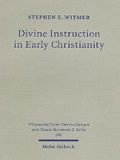
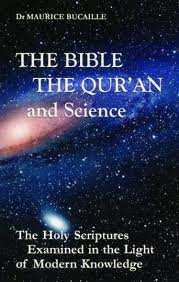
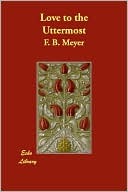
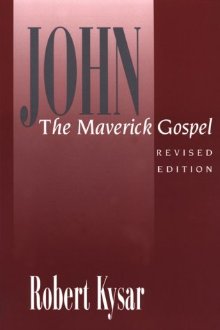
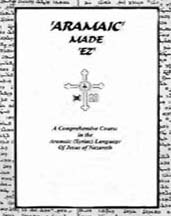
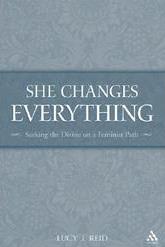
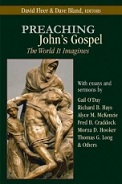

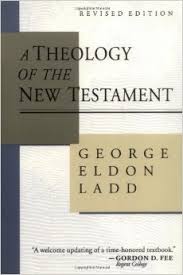
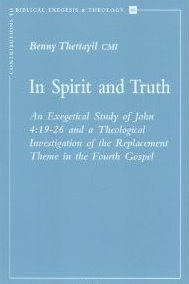


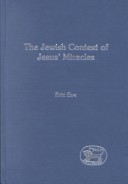
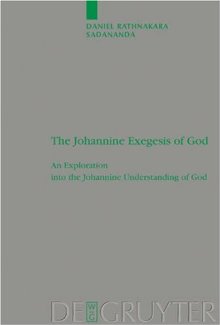

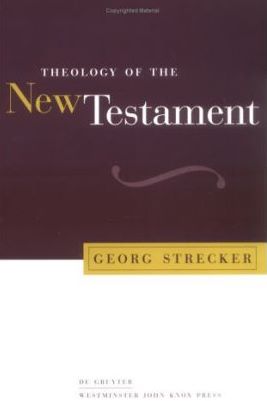

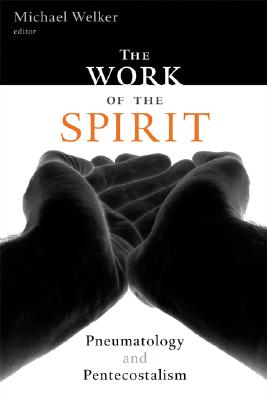
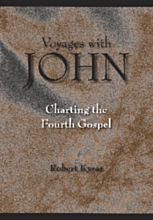


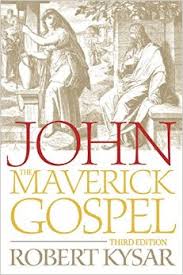
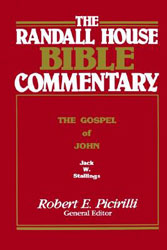

Stephen E. Witmer, Divine instruction in Early Christianity
“Jesus therefore predicts that God will later send a human being to Earth to take up the role defined by John .i.e. to be a prophet who hears God's words and repeats his message to man.”
M. Bucaille, The Bible, the Qur'n, and Science
“And when Jesus foreannounced another Comforter, He must have intended a Person as distinct and helpful as He had been.”
F. B. Meyer, Love to the Utmost
“The Paraclete has a twofold function: to communicate Christ to believers and, to put the world on trial.”
Robert Kysar, John The Meverick Gospel
“But She—the Spirit, the Paraclete...—will teach you everything.”
Danny Mahar, Aramaic Made EZ)
“Grammatical nonsense but evidence of the theological desire to defeminize the Divine.”
Lucy Reid, She Changes Everything
“The functions of the Paraclete spelled out in verses 13-15... are all acts of open and bold speaking in the highest degree.”
David Fleer, Preaching John's Gospel
“The reaction of the world to the Paraclete will be much the same as the world's reaction was to Jesus.”
Berard L. Marthaler, The Creed: The Apostolic Faith in Contemporary Theology
Bultmann calls the “coming of the Redeemer an 'eschatological event,' 'the turning-point of the ages.”
G. Ladd, A Theology of the New Testament
“The Paraclete equated with the Holy Spirit, is the only mediator of the word of the exalted Christ.”
Benny Thettayil, In Spirit and Truth
“The divine Paraclete, and no lessor agency, must show the world how wrong it was about him who was in the right.”
Daniel B. Stevick , Jesus and His Own: A Commentary on John 13-17
Stephen Smalley asserts that “The Spirit-Paraclete ... in John's Gospel is understood as personal, indeed, as a person.”
Marianne Thompson, The God of the Gospel of John
“The Messiah will come and the great age of salvation will dawn (for the pious).”
Eric Eve, The Jewish context of Jesus' Miracles
“The remembrance is to relive and re-enact the Christ event, to bring about new eschatological decision in time and space.”
Daniel Rathnakara Sadananda, The Johannine Exegesis of God
“The Spirit acts in such an international situation as the revealer of 'judgment' on the powers that rule the world.”
Michael Welker, God the Spirit
The Paraclete's “Appearance means that sin, righteousness, and judgment will be revealed.”
Georg Strecker, Theology of the New Testament
“While the Spirit-Paraclete is the true broker, the brokers they rely on are impostors.”
T. G. Brown, Spirit in the writings of John
“The pneumatological activity ... of the Paraclete ... may most helpfully be considered in terms of the salvific working of the hidden Spirit.”
Michael Welker, The work of the Spirit
“The pneuma is the peculiar power by which the word becomes the words of eternal life.”
Robert Kysar, Voyages with John
“The gift of peace, therefore, is intimately associated with the gift of the Spirit-Paraclete.”
Francis J. Moloney, The Gospel of John
“This utopian hope, even when modestly expressed, links Jesus and the prophets to a much wider history of human longing.”
Harvey Cox, The Future of Faith
“Because of the presence of the Paraclete in the life of the believer, the blessings of the end-times—the eschaton—are already present.”
Robert Kysar, John
“They are going, by the Holy Spirit's power, to be part of the greatest miracle of all, bringing men to salvation.”
R. Picirilli, The Randall House Bible Commentary
“The Kingdom of God stands as a comprehensive term for all that the messianic salvation included... is something to be sought here and now (Mt. 6:33) and to be received as children receive a gift (Mk. 10:15 = Lk. 18:16-17).”
G. Ladd, A Theology of the New Testament
Beliefs
By PETER STEINFELS JAN. 20, 2007
“The image of the God who judges in wrath has caused a great deal of spiritual damage," Professor Moltmann will be telling his listeners.
But he is not satisfied with the alternative that makes eternal destiny simply a matter of the individual's own choice of whether to reject God. In that case, Professor Moltmann says, the Last Judgment becomes no more than "the ultimate endorsement of our free will." God really has nothing much to do with it beyond implementing the human outcome; in short, "we are the lords, and God is our servant," he says.
The alternative, in Professor Moltmann's view, is to put Jesus Christ at the center of this final drama. "It is high time to Christianize our traditional images and perceptions of God's Final Judgment," he says.
Any Last Judgment with Christ at the center must answer the cries of human victims for justice, without simply meting out vengeance on the perpetrators of injustice, Professor Moltmann suggests. A Christian eschatological vision would involve not the retributive justice of human courts but "God's creative justice," which can heal and restore the victims and transform the perpetrators.
The goal of a final judgment, in this interpretation, is not reward and punishment but victory over all that is godless, which he calls "a great Day of Reconciliation." Professor Moltmann argues for the universal preservation and salvation not only of humans, as individuals and as members of groups, but also of all living creatures. It has been "a fatal mistake of Christian tradition in doctrine and spirituality," he argues, to emphasize the "end of the old age" rather than "the new world of God," the beginning of the "life of the world to come."
This resurrected life will be bodily and worldly, and its expectation, he says, should teach people to "give ourselves wholeheartedly to this life here and surrender in love" to its “beauties and pains.”
New York Times, Lessons for Living Found in Views of the Last Judgment
January 20, 2007
“But today is the day I declare that I am the one who has to save the humanity. I declare I am the one who is Adishakti, who is the Mother of all the Mothers, who is the Primordial Mother, the Shakti, the desire of God, who has incarnated on this Earth to give its meaning to itself; to this creation, to human beings and I am sure through My Love and patience and My powers I am going to achieve it.
I was the one who was born again and again. But now in my complete form and complete powers I have come on this Earth not only for salvation of human beings, not only for their emancipation, but for granting them the Kingdom of Heaven, the joy, the bliss that your Father wants to bestow upon you.”
THE MOTHER: Messiah-Paraclete-Ruh
London, UK—December 2, 1979
“I am the one about which Christ has talked... I am the Holy Spirit who has incarnated on this Earth for your realization.”
THE MOTHER: Messiah-Paraclete-Ruh
New York, USA—September 30, 1981
“But to communicate with the people, to communicate with the Spirit—to understand the Kundalini, the vibrations, and their different decodings and all that—the Holy Spirit had to come; with Her mouth, and with Her voice, and with Her intelligence that is intelligible to you; with the knowledge, and everything.
Otherwise it is not possible to communicate and that's why if somebody has to come you have to just recognize. Recognition is the best way of understanding the powers that are given to you...
So somebody has to be there to give you the complete picture. You get Realization, you get vibrations (Ruach, Pneuma, Prana), but then what? What about the complete? And for that the Holy Ghost has to take a form. All right?”
The Paraclete Shri Mataji
Sydney, Australia—April 7, 1981
Guest: “Hello Mother.”
Shri Mataji: “Yes.”
Guest: “I wanted to know, is the Cool Breeze (Pneuma) that you have spoken about, you feel on the hands the Cool Wind of the Holy Spirit, as spoken about in the Bible?”
Shri Mataji: “Yes. Yes, yes, same thing, same thing. You have done the good job now, I must say.”
Interviewer: “Is it the Holy Spirit?”
Shri Mataji: “Yes, of course, is the Holy Spirit.”
Guest: “Aha... I am feeling it now on my hand through the [not clear]”
Shri Mataji: “It’s good.”
Interviewer: “Did you want to say anything more than that?”
Guest: “No, I just... That’s all I wanted to know because I...”
Shri Mataji: “Because you are thoughtless now. Enjoy yourself.”
Guest: “Thank you.”
The Paraclete Shri Mataji
Talkback Radio 2UE, Sydney, Australia—March 31, 1981
Second Guest: “I just want to ask Mother about a quotation from the Bible.”
Interviewer: “Yes, what’s that?”
Guest: “It says, ‘But the comfort of the Holy Spirit that the Father will send in My name would teach you all things.’ I would like to ask Her about that.”
Interviewer: “Could you just repeat the quotation again?”
Guest: “But the Comforter, the Holy Spirit, whom the Father will send in My name, will teach you all things.”
Interviewer: “And that’s from where?”
Guest: “John chapter 14, verse 26.”
Shri Mataji: “I think you should take your realization and then you will know the answer to it. Because, logically if it points out to one person, then you have to reach the conclusion, isn’t it? That’s a logical way of looking at things. But I am not going to say anything or claim anything. It is better you people find out yourself.”
Interviewer: “Does that answer your question?”
Guest: “Is the, is the Comforter on the Earth at the present time? Has the Comforter incarnated? Mataji should be able to tell us this because She said that through these vibrations on Her hands, She ...”
Shri Mataji: “Yes, She is very much here and She’s talking to you now. Can you believe that?”
Guest: “Well, I feel something cool [Pneuma/Prana/Chi] on my hand. Is that some indication of the ...?”
Shri Mataji: “Yes, very much so. So that’s the proof of the thing. You’ve already started feeling it in your hands.”
Guest: “Can I?”
Shri Mataji: “Ask the question, ‘Mother, are you the Comforter?’”
Guest: “Mother, are you the Comforter?”
Shri Mataji: “Ask it thrice.”
Guest: “Mother, are you the Comforter?”
Shri Mataji: “Again.”
Guest: “Mother, are you the Comforter?”
Shri Mataji: “Now, what do you get?”
Guest: “Oh, I feel this kind of cool tingling [Pneuma/Prana/Chi] passing all through my body.”
Shri Mataji: “That’s the answer now.”
The Paraclete Shri Mataji
Talkback Radio 2UE, Sydney, Australia—March 31, 1981
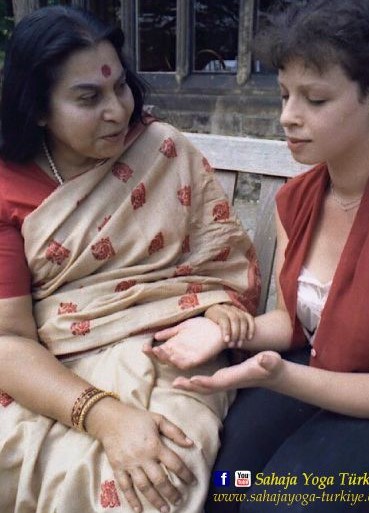
“The Paraclete and the disciples (vv. 25-26): The theme of departure (cf. vv. 1-6; vv. 18-24) returns. There are two "times" in the experience of the disciples: the now as Jesus speaks to them (v. 25) and the future time when the Paraclete, the Holy Spirit, sent by the Father in the name of Jesus, will be with them (v. 26). The Paraclete will replace Jesus' physical presence, teaching them all things and recalling for them everything he has said (v. 26). As Jesus is the Sent One of the Father (cf. 4:34; 5:23; 24, 30, 37; 6:38-40; 7:16; 8:16, 18, 26; 12:44-49), so is the Paraclete sent by the Father. The mission and purpose of the former Paraclete, Jesus (cf. 14:13-14), who speaks and teaches "his own" will continue into the mission and purpose of the "other Paraclete" (cf. v. 16) who teaches and brings back the memory of all that Jesus has said. The time of Jesus is intimately linked with the time after Jesus, and the accepted meaning of a departure has been undermined. The inability of the disciples to understand the words and deeds of Jesus will be overcome as they "remember" what he had said (cf. 2:22) and what had been written of him and done to him (cf. 12:16). The "remembering" will be the fruit of the presence of the Paraclete with the disciples in the in-between-time. In v. 16 Jesus focused on the inability of the world to know the Paraclete, but in v. 26 the gift of the Paraclete to "his own" is developed. As Jesus was with the disciples (v. 25), so will the Paraclete be with the disciples in the midst of hostility and rejection (v. 16). As the story has insisted that Jesus' teaching has revealed God to his disciples, so will the Paraclete recall and continue Jesus' revelation of God to the disciples (v. 26).” (Harrington 1998, 412)
“This is the transformation that has worked, of which Christ has talked, Mohammed Sahib has talked, everybody has talked about this particular time when people will get transformed.”
THE MOTHER: Messiah-Paraclete-Ruh
Chistmas Puja, Ganapatipule, India—25 December 1997
“The Resurrection of Christ has to now be collective Resurrection. This is what is Mahayoga. Has to be the collective Resurrection.”
THE MOTHER: Messiah-Paraclete-Ruh
Easter Puja, London, UK—11 April 1982
“Today, Sahaja Yaga has reached the state of Mahayoga, which is en-masse evolution manifested through it. It is this day’s Yuga Dharma. It is the way the Last Judgment is taking place. Announce it to all the seekers of truth, to all the nations of the world, so that nobody misses the blessings of the divine to achieve their meaning, their absolute, their Spirit.”
THE MOTHER: Messiah-Paraclete-Ruh
MAHA AVATAR, ISSUE 1, JUL-SEP 1980
“The main thing that one has to understand is that the time has come for you to get all that is promised in the scriptures, not only in the Bible but all all the scriptures of the world. The time has come today that you have to become a Christian, a Brahmin, a Pir, through your Kundalini awakening only. There is no other way. And that your Last Judgment is also now.”
THE MOTHER: Messiah-Paraclete-Ruh
“You see, the Holy Ghost is the Mother. When they say about the Holy Ghost, She is the Mother... Now, the principle of Mother is in every, every scripture — has to be there. Now, the Mother's character is that She is the one who is the Womb, She is the one who is the Mother Earth, and She is the one who nourishes you. She nourishes us. You know that. And this Feminine thing in every human being resides as this Kundalini.”
The Paraclete Shri Mataji
Radio Interview, Santa Cruz, USA—1 October 1983
“But there is a Primordial Mother which was accepted by all the religions; even the Jews had it... In India, this is called as Adi Shakti. In every religion they had this Mother who was the Primordial Mother.”
The Paraclete Shri Mataji
TV Interview, Los Angeles, USA—11 October 1993
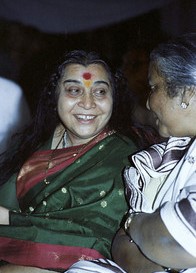
Total number of Recorded Talks 3058, Public Programs 1178, Pujas 651, and other (private conversations) 1249
“What are they awaiting but for the Hour to come upon them suddenly? Its Signs have already come. What good will their Reminder be to them when it does arrive?” (Qur'n, 47:18) “As the above verse indicates, God has revealed some of Doomsday's signs in the Qur'n. In Surat az-Zukhruf 43:61, God informs us that 'He [Jesus] is a Sign of the Hour. Have no doubt about it...' Thus we can say, based particularly on Islamic sources but also on the Old Testament and the New Testament, that we are living in the End Times.” Harun Yahya
Good News (An Naba) of Resurrection (Al-Qiyamah): Videos 3474, Audios 1945, Transcripts 3262 and Events 2413
“Concerning what are they disputing?
Concerning the Great News. [5889]
About which they cannot agree.
Verily, they shall soon (come to) know!
Verily, verily they shall soon (come to) know!”
surah 78:1-5 An Naba (The Great News)
5889. Great News: usually understood to mean the News or Message of the Resurrection.
Abdullah Yusuf Ali, The Holy Qur'n
Amana Corporation, 1989
[Moderator]: “Any other questions?”
[Audience]: “Pardon me for asking this question, but, earlier you talked about the Resurrection and you mentioned about the scriptures, where like in the Hindus scriptures they talk about the Kalki Avatar who will come for the Resurrection, and for the Christians, I know they talk about the return of Christ and all the religions talk about this Resurrection and the belief in the coming of the Messiah. So I just want to know since you say you are going to give the resurrection to us, what is your station?”
Shri Mataji: “In Russia?”
[Audience]: “And are you the promised Messiah? Shri Mataji, are you?”
Shri Mataji: “I see now I am not going to tell you anything about myself, to be very frank. Because see Christ said He was the Son of God, and they crucified Him. I don't want to get crucified. You have to find out. When you become the Spirit you will know what I am. I don't want to say anything about myself.”
THE MOTHER: Messiah-Paraclete-Ruh
Toronto, Canada—October 5, 1993
“It is the Mother who can awaken the Kundalini, and that the Kundalini is your own Mother. She is the Holy Ghost within you, the Adi Shakti, and She Herself achieves your transformation. By any talk, by any rationality, by anything, it cannot be done.”
The Paraclete Shri Mataji
“She is your pure Mother. She is the Mother who is individually with you. Forget your concepts, and forget your identifications. Please try to understand She is your Mother, waiting for ages to give you your real birth. She is the Holy Ghost within you. She has to give you your realization, and She's just waiting and waiting to do it.”
THE MOTHER: Messiah-Paraclete-Ruh
Sydney, Australia—Mar 22 1981
“The Kundalini is your own mother; your individual mother. And She has tape-recorded all your past and your aspirations. Everything! And She rises because She wants to give you your second birth. But She is your individual mother. You don't share Her with anybody else. Yours is a different, somebody else's is different because the tape-recording is different. We say She is the reflection of the Adi Shakti who is called as Holy Ghost in the Bible.”
The Paraclete Shri Mataji
Press Conference July 08 1999—London, UK
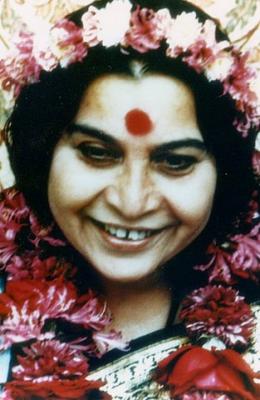
Shri Mataji Nirmala Devi was
Christian by birth, Hindu by
marriage, and Paraclete by duty.
"The Paraclete represents direct,
intimate divine intervention,
supporting and teaching
believers and challenging the
world, as Jesus did. " (D. Stevick
Jesus and His Own, 2011, 290)
But there has to be a Mother and this is the time of Aquarius what we call in Sanskrit as Kumbha, meaning the Aquarius which is the Kundalini, where She nourishes, where She cures you, She redeems you, She guides you, counsels you, and this is the time of the Mother. We had the time of the Father, then of the Son, and now this is the time of the Mother where She has to nourish you, where She has to take you to your ultimate goal that is the Spirit.
The consciousness itself, the way we have been moving in other directions, have been like people think that if a woman starts fighting for her life and then she is asserting the femininity. She is not.
What I'm saying is not meant for women or men. It is meant for every one of us, that we have to become like a mother. Like a Divine Mother, like a person who can nourish people, who can give them love, affection, attention, perseverance, fore-bearing.
This is only possible for a Mother to do it and that motherhood should be awakened in every human being.”
THE MOTHER: Messiah-Paraclete-Ruh
Public Program Day 1, Boston, United States—Oct. 11, 1983
Disclaimer: Our material may be copied, printed and distributed by referring to this site. This site also contains copyrighted material the use of which has not always been specifically authorized by the copyright owner. We are making such material available to our readers under the education and research provisions of "fair use" in an effort to advance freedom of inquiry for a better understanding of religious, spiritual and inter-faith issues. The material on this site is distributed without profit. If you wish to use copyrighted material for purposes other than “fair use” you must request permission from the copyright owner.